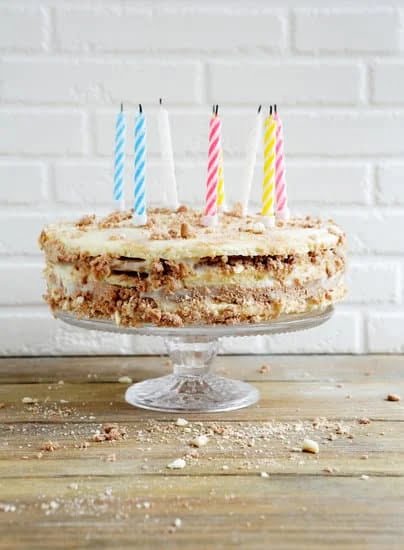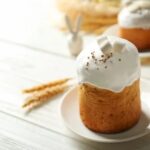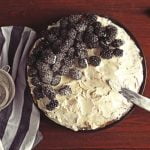Coconut cake decorations are more than just the icing on the cake – they are the perfect finishing touch that elevates any dessert to a whole new level. From elegant coconut shavings to creative and artistic designs, these decorations can transform an ordinary cake into a work of art.
In this article, we will explore the rich history and significance behind the tradition of decorating coconut cakes. We will delve into essential tools and ingredients needed to create stunning coconut cake decorations, providing you with all the information you need to get started on your own culinary masterpiece.
Whether you’re a seasoned baker or a novice in the kitchen, we’ve got you covered with step-by-step guides on making and applying DIY coconut shavings for a natural and elegant look. Additionally, we’ll challenge your imagination by exploring unique and artistic coconut cake decoration ideas that will truly wow your guests.
Not only limited to traditional coconut flakes, we’ll also discuss how adding pineapple, mango, and other fruity accents can give your coconut cakes a tropical twist. And for those special occasions like Christmas, Easter, or birthdays, we’ll provide you with holiday-themed ideas for decorating your coconut cakes.
If you want to take your coconut cake decorations up a notch, why not consider incorporating delicate edible flowers and petals? We’ll show you how to use these floral touches to enhance the visual appeal of your desserts while still making them completely safe for consumption.
Finally, we will showcase incredible coconut cake decorations crafted by professional bakers and pastry chefs. Get ready to be inspired by their expert techniques and use their creations as inspiration as you unleash your own imagination in customizing coconut cake decorations to suit different themes and tastes.
Whether you’re looking to impress at a dinner party or simply want to add some flair to your homemade treats, join us on this journey as we dive into the wonderful world of coconut cake decorations.
History and Significance
Coconut cakes have a rich history and cultural significance when it comes to their decorations. The tradition of decorating coconut cakes dates back many centuries, with variations that can be found in different cultures around the world. In this section, we will explore the history and significance of coconut cake decorations, shedding light on how this art form has evolved over time.
Coconut cakes have been enjoyed for centuries in various parts of the world. The use of coconuts in baking can be traced back to ancient times, particularly in regions where coconuts are native. These regions include Southeast Asia, the Caribbean, and parts of Africa. Coconuts were considered a staple ingredient due to their abundance and versatility.
The art of decorating coconut cakes began as a way to enhance their visual appeal on special occasions. In many cultures, coconut cakes were traditionally made for celebrations such as weddings, birthdays, or religious holidays. Decorating these cakes became a way to showcase creativity and skill while adding an extra touch of beauty to the festivities.
Over time, the art of decorating coconut cakes has become a cherished tradition passed down through generations. Different regions have developed their own unique styles and techniques for creating stunning cake decorations using coconuts. From delicate patterns made with grated coconut shavings to intricate designs using edible flowers and fruits, each culture brings its own flair and symbolism to these beautiful desserts.
To fully appreciate the significance of decorating coconut cakes, it is important to understand the cultural context in which these traditions were born. By exploring the history behind this art form, we can gain a deeper appreciation for its beauty and meaning. Whether you are creating coconut cake decorations for a special occasion or simply trying your hand at this ancient craft, understanding the roots of this tradition adds an extra layer of significance to your creations.
| Country/Region | Coconut Cake Decoration Style |
|---|---|
| Philippines | Pandan macapuno coconut cake with intricate sugar flower decorations |
| Jamaica | Garnishing coconut cakes with vibrant tropical fruits like mango and pineapple |
| Hawaii | Decorating coconut cakes with toasted coconut flakes and edible orchids |
| India | Using pureed coconuts to create a smooth, white frosting on coconut cakes |
Getting Started
Creating stunning coconut cake decorations requires the right tools and ingredients. To get started, gather the following essential items:
- Cake Turntable: A cake turntable is a rotating stand that allows for easy maneuvering and decorating of the cake. It helps to achieve smooth and even frosting application.
- Offset Spatula: An offset spatula is a must-have tool for spreading frosting and smoothing it out on the cake’s surface. Its angled shape makes it easier to reach all areas of the cake.
- Piping Bags and Tips: Piping bags are used to pipe different designs onto the cake using various tips. They come in different sizes and materials, such as disposable plastic or reusable fabric. Consider having a variety of tips, including round, star, leaf, and petal shapes, to create diverse designs.
- Coconut: Of course, one cannot decorate a coconut cake without coconut. Use shredded or desiccated coconut for a traditional look. For added texture and visual appeal, consider using toasted coconut.
- Frosting Recipes: Depending on your flavor preferences, choose from classic buttercream frosting, cream cheese frosting, or other options like chocolate ganache or whipped cream.
- Food Coloring: If you want to add a pop of color to your coconut cake decorations, have gel-based food coloring on hand. It offers vibrant colors without affecting the consistency of frosting.
- Flavored Extracts: Enhance the taste of your frostings by adding flavored extracts such as vanilla, almond, or lemon.
- Decorating Tools: Apart from traditional tools like piping bags and spatulas, consider investing in specialized decorating tools like flower nails for creating delicate flowers or fondant cutters for intricate designs.
- Edible Glitter or Sprinkles: Add some sparkle to your coconut cake by incorporating edible glitter or sprinkles in coordinating colors.
Now that you have all the necessary tools and ingredients ready, it’s time to start decorating your coconut cake. Remember to let your creativity flow and enjoy the process of bringing your vision to life.
DIY Coconut Shavings
Coconut shavings are a popular and versatile decoration for coconut cakes. They add a natural and elegant look to any cake, making it the perfect finishing touch. Creating your own coconut shavings is simple and allows you to customize the size and texture of the shavings to suit your preferences.
To make coconut shavings, you will need a fresh coconut, a grater or vegetable peeler, and a baking sheet. Start by preheating your oven to 350°F (175°C). Then, crack open the coconut and remove the meat from the shell. Using a grater or vegetable peeler, carefully shred the coconut meat into thin strips. If you prefer thicker shavings, you can use a mandolin slicer instead.
Spread the coconut shavings onto a baking sheet lined with parchment paper. Place the baking sheet in the preheated oven for about 5-10 minutes or until the shavings are dry and lightly golden brown. Keep a close eye on them as they can burn quickly.
Once your homemade coconut shavings are ready, it’s time to apply them to your cake. Start by frosting your cake with a thin layer of buttercream or cream cheese frosting – this will act as an adhesive for the shavings. Gently press handfuls of the shavings onto the sides and top of the cake until it is completely covered.
For added dimension, you can also sprinkle some toasted coconut flakes on top of the cake or create decorative patterns with colored sprinkles or edible flowers.
Creating and applying DIY coconut shavings is an easy way to elevate any coconut cake and achieve a natural, elegant look.
Creative Coconut Styles
Coconut cake decorations offer a wide range of creative possibilities, allowing bakers and decorators to explore unique and artistic styles for their cakes. With coconut’s versatile texture and flavor, there are endless ways to make your cake stand out with stunning decorations. In this section, we will delve into some exciting ideas to inspire you to create truly one-of-a-kind coconut cake designs.
One popular creative style is incorporating a tropical theme into coconut cake decorations. Consider adding elements like palm trees, seashells, or ocean waves using fondant or edible paints. You can also experiment with different shades of blue and green icing to create a captivating underwater scene. Another fun idea is to use crushed graham crackers mixed with brown sugar to make a sandy beach around the base of the cake.
For those looking for a more modern and minimalist approach, creating geometric patterns using coconut flakes can be an excellent choice. Arrange toasted coconut flakes in intricate shapes such as stripes, chevrons, or even polka dots to achieve a visually striking design. This technique works particularly well on square or rectangular cakes.
If you’re feeling adventurous, why not explore the world of ombré designs? Ombré involves blending varying shades of color together for a gradient effect. Apply this concept to your coconut cake by gradually transitioning from light to dark shades of icing or coconut shavings across the layers of your cake for a trendy and eye-catching decoration.
With these unique and artistic ideas as inspiration, it’s time to let your creativity run wild and experiment with different techniques and styles. Remember that decorating coconut cakes allows you the freedom to showcase your personal taste while creating a visual delight that will surely impress your guests. So go ahead and have fun exploring these creative avenues for designing stunning coconut cake decorations.
Tropical Twist
Adding tropical fruit accents to coconut cakes can take your dessert to a whole new level of flavor and visual appeal. The combination of coconut, pineapple, mango, and other fruits creates a refreshing and vibrant taste that pairs perfectly with the lightness of the cake.
Whether you are looking to create a summery treat or simply want to add a touch of tropical flair to your dessert table, incorporating these fruity accents into your coconut cake decorations is sure to impress.
To achieve the tropical twist in your coconut cake decorations, you will need some essential tools and ingredients:
- Pineapple slices or rings: These can be fresh or canned pineapple slices that have been drained. If using fresh pineapple, make sure to remove the tough core before using it for decoration.
- Mango slices: Fresh mangoes provide a burst of sweetness and beautiful color to your coconut cake. Make sure to choose ripe mangoes that are firm but not too soft.
- Other fruits: Consider adding a variety of other tropical fruits such as kiwi, passion fruit, or papaya for added flavor and visual interest.
- Coconut flakes: Use sweetened or unsweetened coconut flakes depending on your preference. Toasted coconut flakes can also add an extra layer of depth and crunchiness to your cake decorations.
Once you have gathered all the necessary ingredients, here is a step-by-step guide on how to incorporate these fruity accents into your coconut cake:
- Start by frosting your coconut cake with a layer of cream cheese frosting or any other frosting of your choice.
- Place pineapple slices or rings on top of the frosted cake, arranging them in an appealing pattern. You can also cut them into smaller pieces for more versatility in decoration.
- Add slices of mango around the pineapple, alternating between different sizes and shapes for visual interest.
- Fill any gaps between the fruit slices with additional fruit such as kiwi or passion fruit for added color and flavor.
- Finally, sprinkle coconut flakes over the entire cake to create a cohesive tropical look.
Remember to refrigerate your coconut cake with fruit decorations until ready to serve. This will help keep the fruits fresh and vibrant. With this tropical twist, your coconut cake will not only be visually stunning but also provide a burst of fruity goodness with every bite.
Holiday Delights
The holiday season is a time of joy, celebration, and indulgence. What better way to spread the festive cheer than by decorating a delicious coconut cake? Whether it’s Christmas, Easter, or a birthday party, decorating coconut cakes for special occasions adds an extra touch of magic to any gathering. In this section, we will explore some delightful ideas and techniques to inspire your holiday coconut cake decorations.
The Christmas Coconut Cake
Christmas is a time of glittering lights, sparkling ornaments, and warm gatherings with loved ones. Your coconut cake can reflect this festive atmosphere through a variety of decoration options. One popular idea is to create a winter wonderland scene on your cake using edible snowflakes and fondant figures such as snowmen or reindeer.
You can also use colorful sprinkles or edible glitter to give your cake a touch of sparkle. For a traditional look, consider arranging red and green sugar flowers on the top of the cake or piping holly leaves along the sides.
Easter Delights
Easter brings with it thoughts of sunny spring days filled with blooming flowers and sweet treats. A coconut cake decorated for Easter can capture these joyful vibes in so many ways. Start by covering your cake in pastel-colored buttercream frosting – think soft pinks, light blues, or pale yellows – to create a beautiful canvas for your decorations.
Top it off with delicate sugar flowers like daisies or tulips for a fresh spring look. Another idea is to shape fondant into little Easter eggs or bunnies that you can arrange on top of the cake.
A Birthday Extravaganza
Birthdays are all about celebrating the uniqueness of an individual – and what better way to do that than through personalized coconut cake decorations? Tailor the design of your coconut cake according to the person’s hobbies, interests, or favorite colors. For a sports enthusiast, you can create fondant figures of their favorite sports equipment or team logos.
If they love music, consider decorating the cake with musical notes made out of piped icing. The options are endless when it comes to customizing a coconut cake for a birthday celebration.
With these ideas in mind, you can now take your coconut cake decorations to the next level for any special occasion. From winter wonderlands to springtime delights and personalized birthdays, there’s no limit to the creativity you can infuse into your coconut cakes. Let your imagination run wild and watch as your beautifully decorated cakes become the highlight of every festive gathering.
Delicate Floral Touch
Coconut cake decorations can be taken to the next level by incorporating beautiful and edible flowers and petals. Adding a delicate floral touch not only enhances the visual appeal of coconut cakes but also introduces a subtle and fragrant flavor that complements the tropical taste of coconuts.
Selecting the Right Flowers
When it comes to choosing flowers for coconut cake decorations, it is essential to ensure that the flowers are edible, pesticide-free, and food-safe. Popular edible flowers that pair well with coconut cakes include roses, pansies, marigolds, lavender, violets, hibiscus, calendula, and chamomile.
Before using flowers for decoration purposes, make sure you have properly identified them as edible varieties. Some flowers may look visually appealing but could be toxic if consumed. It’s also important to remember that some people may have allergies or sensitivities to certain types of flowers, so it’s best to ask your guests about any potential allergies before serving them decorated coconut cake.
Preparation and Application
To prepare the edible flowers for decoration, gently wash them under running water to remove any dirt or pesticides. Be careful not to damage their delicate petals in the process. Once clean and dry, separate the petals from the flower head as needed. The petals can be applied directly onto frosting or whipped cream on top of baked coconut cakes.
Using tweezers or clean fingers, carefully place the petals on top of the cake in an arrangement that suits your desired aesthetic. You can choose to scatter individual petals randomly or create intricate designs using different colored petals. Press lightly on each petal to ensure they adhere securely without damaging their delicate structures.
Remember that some flowers may wilt quickly once removed from their stems, so it’s best to decorate your coconut cake with floral touches just before serving to maintain their freshness and appearance.
Enhancing Flavors and Aesthetics
In addition to adding a visual and fragrant element, edible flowers can also enhance the overall flavor of coconut cakes. The floral notes from the petals can complement the tropical taste of coconuts, creating a harmonious blend of flavors.
Furthermore, using edible flowers for coconut cake decorations adds an elegant and natural touch. The vibrant colors and intricate shapes of the petals provide a stunning contrast against the creamy white backdrop of coconut shavings or frosting. Whether you’re decorating a simple home-baked coconut cake or a professionally made one, incorporating delicate floral elements can elevate the final presentation and make it truly memorable for any occasion.
As with any other aspect of coconut cake decoration, it’s essential to have proper knowledge about which flowers are safe to eat and how they should be used. Experiment with different combinations of flowers and explore various arrangement styles to find what suits your taste preferences best. With a delicate floral touch, your coconut cakes will become not only delectable desserts but also stunning works of art that will impress your guests.
Unleashing Your Imagination
Customizing coconut cake decorations allows for endless possibilities and is a great way to add a personal touch to any celebration. Whether you’re decorating a coconut cake for a birthday, wedding, or just because, there are several tips and tricks to help you unleash your imagination and create a stunning final product that suits different themes and tastes.
To begin customizing your coconut cake decorations, consider the overall theme or occasion. Are you going for a rustic look? A sophisticated and elegant design? Or perhaps a whimsical and fun style? Once you have determined the theme, you can start brainstorming ideas that align with it.
One tip for customizing coconut cake decorations is to use edible colors or food coloring to match the color scheme of your chosen theme. For example, if it’s a beach-themed party, you can use blue coloring to create an ocean effect on top of the coconut shavings. If it’s a baby shower, pastel colors such as pink or blue can be used to create a soft and delicate look.
Another way to customize coconut cake decorations is by experimenting with different textures and shapes. Try using various sizes of grated coconut shavings or even toasted coconut flakes for added dimension. You can also incorporate different piping techniques with buttercream frosting to create intricate designs such as flowers, swirls, or even personalized messages.
Furthermore, don’t forget about adding additional decorative elements such as sprinkles, dragees, or edible glitter for an extra touch of magic. These small details can make a big difference in enhancing the overall appearance and appeal of your coconut cake.
Expert Inspiration
Coconut cake decorations are truly a work of art, and professional bakers and pastry chefs have taken this craft to the next level. In this section, we will take a closer look at the incredible creations by these experts that will surely inspire you to elevate your own coconut cake decorations.
Professional bakers and pastry chefs have mastered the art of creating stunning designs using coconut as their canvas. From intricate floral patterns to whimsical designs, their creations are not only visually appealing but also capture the true essence of coconut cake decorations. These experts have an eye for detail and use their skills to create cakes that are truly unique and captivating.
One example of expert inspiration is the use of different textures in coconut cake decorations. Professional bakers often experiment with various techniques such as piping, molding, and airbrushing to create dimensional effects on their cakes. Whether it’s creating lifelike flowers or realistic beach scenes, these experts know how to bring a coconut cake to life.
Another aspect where professionals excel is in incorporating other ingredients into their coconut cake decorations. They often combine flavors like pineapple, mango, or citrus fruits to add a tropical twist to their creations. This not only enhances the taste but also adds vibrant colors and textures that make the designs even more striking.
In conclusion, professional bakers and pastry chefs are a great source of inspiration for those looking to take their coconut cake decorations to the next level. Their expertise in creating intricate designs, experimenting with different textures, and incorporating various ingredients sets them apart from amateurs.
By studying their work and incorporating some of their techniques into your own creations, you can create stunning coconut cake decorations that will surely impress everyone who sees them. So let your imagination run wild and unleash your creativity as you explore this wonderful world of coconut cake decorations.
Frequently Asked Questions
Can you decorate a coconut cake?
Decorating a coconut cake requires some creativity and patience. To start, you can frost the cake with a layer of coconut-flavored icing, which will enhance the coconut flavor throughout. Then, you can sprinkle shredded coconut generously on top of the frosting, covering the entire surface of the cake.
If you want to add more decorative elements, you could pipe some additional icing along the edges or create patterns with toasted coconut flakes. You can also garnish the cake with edible flowers or slices of fresh fruit for an added visual appeal.
How do you get coconut flakes to stick to a cake?
Getting coconut flakes to stick to a cake can be achieved by using a combination of ingredients and techniques. First, make sure the surface of your cake is slightly moist so that it acts as an adhesive for the coconut flakes. You can brush simple syrup or a thin layer of melted jam onto the cake to help keep the coconut in place.
Additionally, if your coconut flakes are too dry or not sticking well, lightly toasting them beforehand can enhance their natural oils and make them stickier when applied onto the cake. Gently press the flakes into the moist surface, being careful not to apply excessive pressure that may damage or compress the cake.
How do you get coconut on the side of a cake?
Applying coconut on the side of a cake requires a bit more finesse but can be achieved with a few different methods depending on your desired outcome. One approach is to spread a layer of frosting on all sides of the cake and then gently press shredded or toasted coconut onto it while rotating it slowly. This method may require some patience and precision to avoid excess mess or uneven application.
Another technique involves using your hands to scoop up small handfuls of shredded or toasted coconut and gently pressing them against the sides of a frosted cake from bottom to top until desired coverage is achieved. The key here is to work slowly and delicately so as not to disturb or damage any previous layers already applied to the sides of your cake.

Welcome to our cake decorating blog! My name is Destiny Flores, and I am the proud owner of a cake decorating business named Cake Karma. Our mission is to provide delicious, beautiful cakes for all occasions. We specialize in creating custom cakes that are tailored specifically to each customer’s individual needs and tastes.





